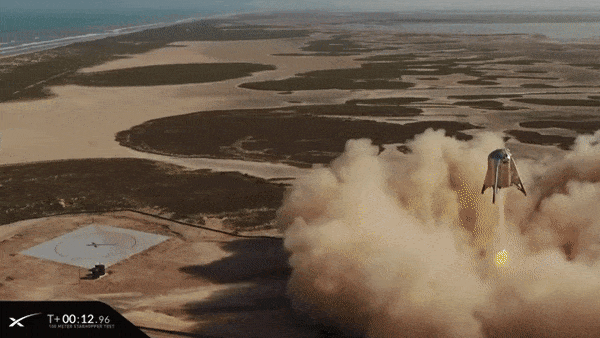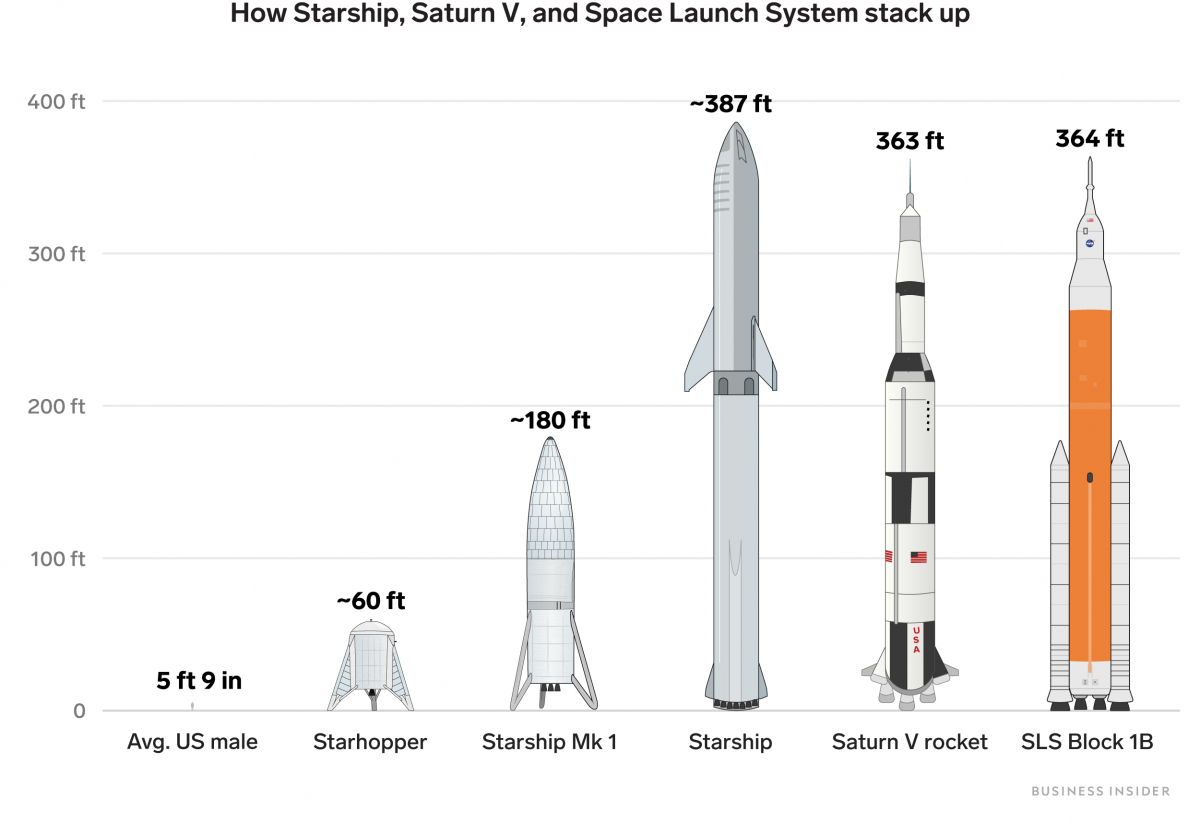After what SpaceX's founder Elon Musk called an "embarrassing" glitch with Starhopper, an experimental rocket ship, the company pulled off an impressive launch and landing on Tuesday.
"Congrats SpaceX team!!" Musk tweeted shortly after the attempt. "One day Starship will land on the rusty sands of Mars."
Starhopper is a roughly 60-foot-tall (18 meters) vehicle and a squat steel prototype of a planned Mars launch system called Starship. It's located at SpaceX's rocket launch and development facility near Boca Chica Beach, Texas, at the southeastern tip of the state. (SpaceX/YouTube)
(SpaceX/YouTube)
SpaceX flew Starhopper on its first untethered flight in July, but Musk said Tuesday's launch – which appeared to be an unmitigated success – would be its last.
The company will now move on to testing bigger and more capable prototypes in pursuit of Starship. Its hope within the next few years is to develop a final version of the fully reusable, two-stage launch system.
Once complete, the stainless-steel-hulled vehicle may stand nearly 40 stories tall and come equipped with about 40 methane- and oxygen-burning Raptor rocket engines.
But first SpaceX needs to thoroughly test its core technologies, many of which are new – including the Raptor.
Starhopper lifted off at about 6:02 pm ET on Tuesday, or 5:02 pm local time (10:02 pm UTC), then landed about 57 seconds later.
SpaceX's full video of the launch, below, showed several live views of the stubby steel rocket ship and its lone Raptor rocket engine taking off.
More
As the engine ignites, the launch throws up a thick cloud of fumes and dust. The video feed then cuts to an aerial drone view of the launchpad as Starhopper ascends.
The vehicle then gimbals (or steers) its Raptor engine to move up and eastward as reaction control thrusters – seen as puffs of white smoke – keep the vehicle righted.
Then, in another chaotic cloud of dust and smoke, lands on a concrete pad a few hundred feet away.
A successful flight after an 'embarrassing' glitch
The company hoped to launch Starhopper on Monday, but delayed its attempt several times before aborting with just 0.8 seconds left in the countdown. Musk said the issue was with two torch-like devices that light up Starhopper's sole Raptor engine.
"Igniters need to be inspected. We will try again tomorrow same time," Musk tweeted on Monday following the scrub.
He added that the cause was probably a wiring or connector issue. Overnight, he responded to a Twitter user who questioned why there weren't any sensors or other checks on the devices – which are crucial to the rocket taking off – to verify they are working.
"Yes, rather embarrassing," Musk replied.
Whatever SpaceX workers did to correct the glitch apparently worked, though. And now, with Starhopper's final flight in the can, SpaceX can move forward with attaching more of its Raptor engines to bigger and more capable prototypes.
Starhopper is one of many steps in SpaceX's quest to reach Mars
 (Yutong Yuan/Samantha Lee/Business Insider)
(Yutong Yuan/Samantha Lee/Business Insider)SpaceX is working toward launching a larger prototype, called Starship Mk1, that will use three Raptor rocket engines and be capable of launching from the Texas site, flying around Earth, and landing back there.
The rocket company is also building a similar yet competing prototype in Florida called Starship Mk2.
Before SpaceX can launch either rudimentary rocket ship, or any full-scale Starships, the company needs sign-off from the FAA.
"Working on regulatory approval for both Boca Chica, Texas, and Cape Kennedy, Florida," Musk tweeted in March. "Will also be building Starship & Super Heavy simultaneously in both locations."
Those vehicles are all stepping stones to Starship, a roughly 18-story spaceship, and Super Heavy, a roughly 23-story booster.
The launch system is also being designed for full reusability, which may vastly reduce the cost of accessing space.
Other versions could be built to deploy hundreds of satellites at a time or rocket paying passengers halfway around the world in about half an hour.
SpaceX fired up Starhopper for the first time in April. That test secured the rocket ship with giant bike-chain-like tethers on its legs, and the vehicle lifted just a few inches off the ground.
On July 25, the vehicle has soared about 60 feet, or 18 meters, off the ground, untethered – though it did inadvertently start a fire in a nearby wildlife management area that scorched more than 100 acres.
With Starhopper's work now done, though, workers will soon cannibalise it for parts and turn it into a peculiar-looking test stand for Raptor engines that will power SpaceX's rockets of the future.
Musk is due to present on the company's plans for the system, and possibly reaching the moon and Mars in the 2020s, sometime in September.
This article was originally published by Business Insider.
Join us on Facebook or Twitter for a regular update.
#Space | https://sciencespies.com/space/spacexs-experimental-mars-rocket-starhopper-just-passed-its-last-test/
No comments:
Post a Comment